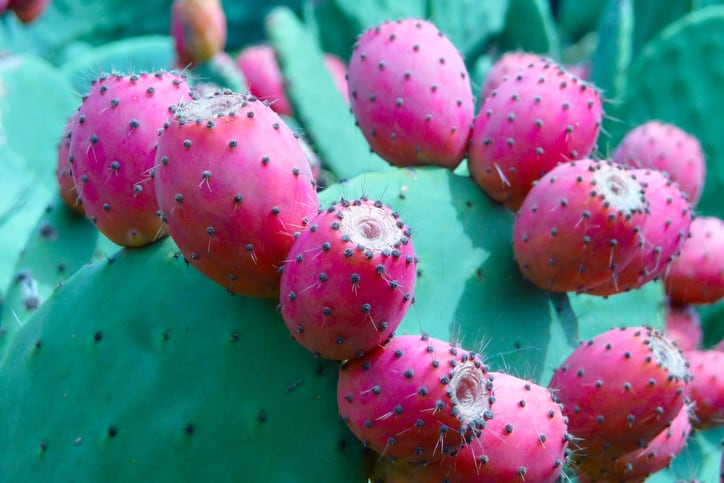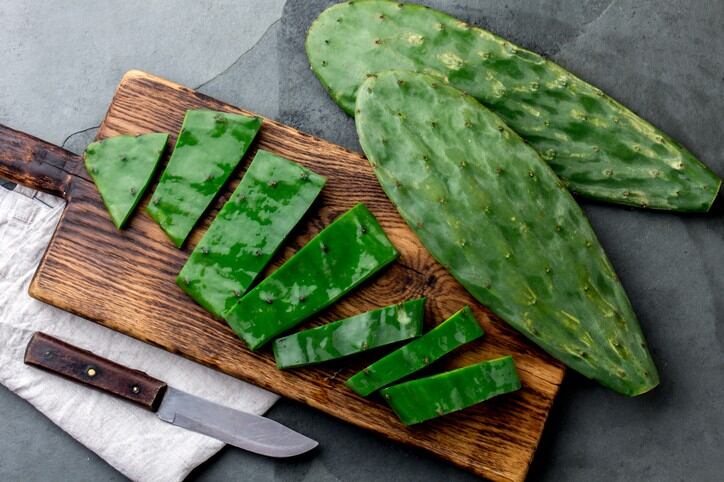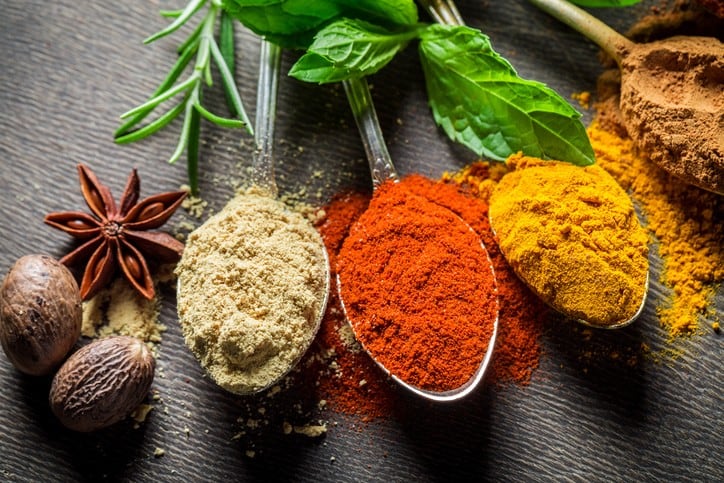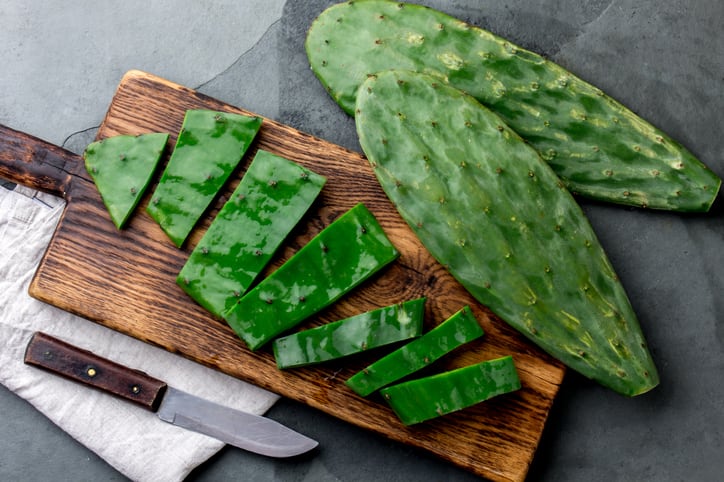Nopal comes from Mexico, which is still the largest producing and consuming country in the world where where per capita yearly consumption of nopalitos – the young pads of nopal cacti – is 6.4 kilos. In Brazil, however, nopal cactus is widely unheard of as a food product but it is grown for animal feed. In 2017, Brazil had more than 500,000 hectares of cactus plantations to provide animal forage, according to FAO.
Despite these associations, Brazil is a potentially lucrative market for manufacturers of nopal-based foods thanks to its nutritional profile, according to a recent study.
The study authors recruited 200 individuals in Mexico and 200 in Brazil and evaluated their attitudes towards nopal with a survey before giving them nopal cookies to try. The Brazilian group tried a cookie with 80% wheat and 20% nopal and a 100% wheat cookie as a control.
A functional food
Brazilian participants positively rated both the wheat-based and nopal-based cookies with over 70% acceptance levels for both, evaluating characteristics such as color, aroma and texture, which varied from ‘liked much’ to ‘liked very much’. This was similar to the results from the Mexican group, which indicated strong potential for this vegetable in Brazilian food, the researchers write.
“It was possible to observe that Brazilians are willing to accept nopal as food due to their functional properties, although this vegetable [is not part of] the food culture of this country. This result, coupled with the positive acceptance of Mexican nopal cookies, ratifies the primary objective of working with products made from this vegetable in Brazil,” they conclude.
Over one-quarter (28.5%) of Brazilians were aware of nopal's nutritional benefits. The researchers found no significant differences in nopal perception based on gender, however, younger participants and those with higher education levels in both countries perceived nopal as a healthy food.
“This is because younger people are increasingly worried about consuming foods with functional characteristics, aiming for a better quality of life,” write the researchers.
More research should be carried out to determine what kind of product would be most acceptable among consumers who see nopal as an unfamiliar food in their cultural context. However, they suggest that adding it into familiar product categories could be a useful entry point.
Mexico’s KUA Foods on nopal’s LATAM potential
Mexican healthy food company KUA Foods has two nopal-based brands in its portfolio: Nopalia, a range of nopal tortillas, chips and tostadas, and Nopa
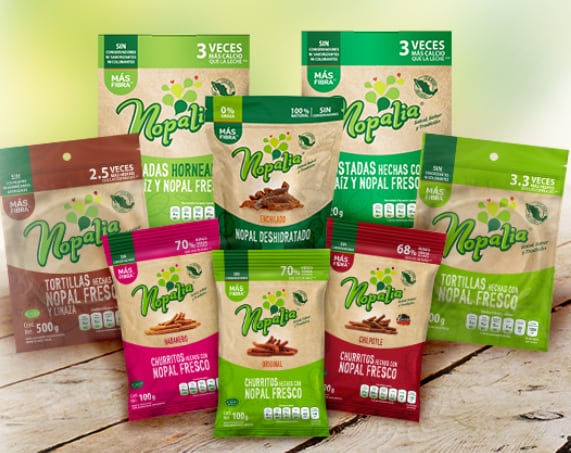
Health, a range of nopal tea and powdered drinks, and it is interested in exporting to other Latin American countries.
“Nopal is a very interesting product to export because in Mexico it’s common to see cactus on every corner but in foreign countries it’s exotic,” Mauricio Rojas García, business development manager at KUA Foods, told FoodNavigator-LATAM.
The company exports its nopal products to the US and is currently in talks with retailer Cencosud in Chile and Colombia. Cencosud was particularly interested in the tostada and tortilla snacks as these are familiar formats to consumers there, Rojas said.
“Cactus is a strong product to enter to a new country. You can explain the benefits of its fiber content and the fact it is low in cholesterol and fat. We also have the highest percentage of cactus in our products than our competitors. Our churrito chips are made with 38% fresh nopal and there is 48% in the tortillas.”
In the study, the vast majority (96%) of Mexicans questioned said they ate nopal, with around 30% attributing this to its delicious taste, a further 30% saying it was an essential part of Mexican cuisine, 25% because of its nutritional properties and 15% because it was cheap.
None of the Brazilians said they eat nopal but only 25% said this was because it was animal food. Forty-five percent said it was because they had nowhere to buy it and 30% said they did not know how to prepare it.
Source: Food Research International
Available online ahead of print, October 2019, doi.org/10.1016/j.foodres.2018.08.036
“Consumer perception and use of nopal (Opuntia ficus-indica): A cross-cultural study between Mexico and Brazil”
Authors: J. Gondimde Albuquerque, J. Souza Aquino, et al.

